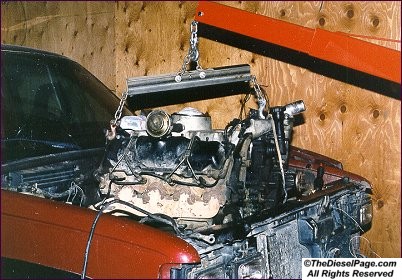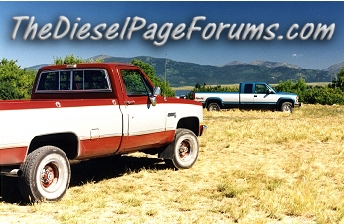6.2/6.5 Diesel Conversions - The High Points
By Jim Bigley
A few key points to remember:
- The GM 6.2L and 6.5L diesel engines share the very same bellhousing configuration and bolt pattern with all Chevy and GMC V-8 gasoline engines (till the LS series of gas engines).
- The GM 6.2L and 6.5L diesel engines share the very same motor mount configuration with all Chevy and GMC V-8 gasoline engines (till the LS series of gas engines).
- The GM 6.2L and 6.5L diesel engines are about 200 or so lbs heavier than a gasoline 350 V-8. The bare longblock weighs just over 700 lbs.
- The GM 6.2L and 6.5L diesel engines have identical dimensions, and nearly every bolt-on component on either engine will interchange with the other.
- A conversion from gas to diesel will require a hydraulic brake booster, diesel starter, larger diesel radiator, all engine driven accessory brackets, and fan assemblies. Your A/C compressor and power steering pump might work with the correct diesel brackets.
- The automatic transmission torque converter should be changed to one rated for diesel operation. The stall rpm of a gas converter will be above the 1700-2000 rpm torque peak of the diesel. We suggest modifying the transmission governor setting to upshift at an rpm below the engine's governed rpm of 3300-3600 (if non-electronic transmission). An overdrive transmission is recommended. Low gearing, no overdrive and higher freeway speeds make the diesel engine hard to live with. Best fuel economy is possible when running the engine at about 1800-2000 rpm at your chosen cruise speed.
For anyone considering a swap, I'd recommend buying a diesel donor vehicle, swap all the parts in both directions, then sell the donor. This will result in the best and least expensive conversion. Buying all the diesel-related components usually puts the cost out of reach for most people. Older diesel trucks and Suburbans with body or other cosmetic problems are usually pretty affordable. TDP
Copyright 2007 by The Diesel Page








 Reply With Quote
Reply With Quote


